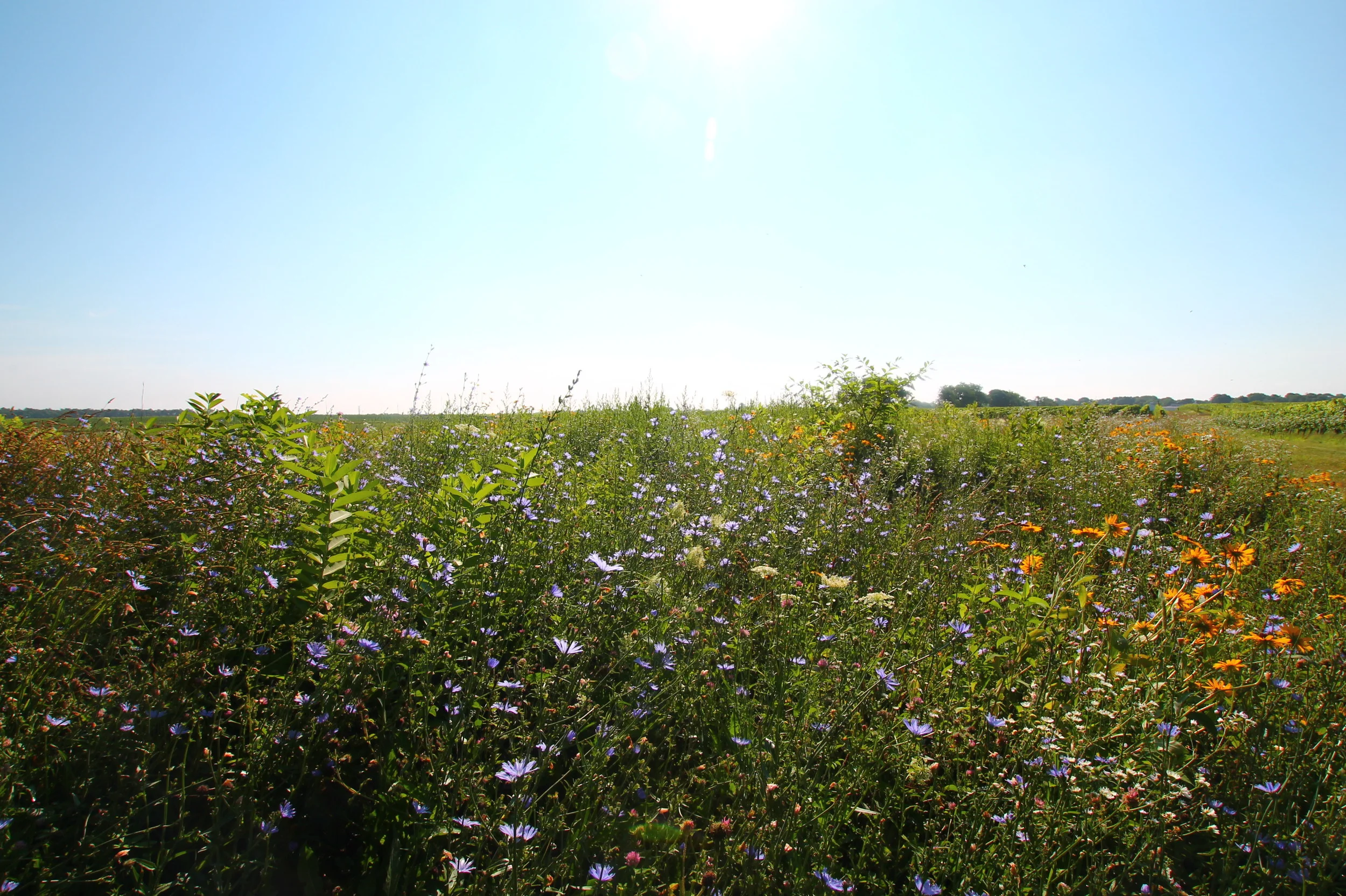our soils
Geologically, the soils of the East End of Long Island are relatively young. The last glacier of the Wisconsin Age receded from the region about 11,000 years ago. As the glacier moved over the area it carried large quantities of rock, much of which was ground into gravel, sand and silt-sized soil particles. When the advancing ice stopped, the material ahead of the glacier was left in place as a ridge called a terminal moraine. Two moraines make up the East End – the Ronkonkoma Moraine to the south and the Roanoke Point Moraine to the north. As the glacial ice melted, enormous quantities of water ran from the glacier, carrying and sorting the soil materials. Most of the material was sand and gravel which was deposited on a broad plain in front of the moraine. This area is known as the glacial outwash plain and makes up the majority of the farmland on Long Island. As the ice kept melting, most of this plain was covered by water or wind-deposited silt, clay and fine sand to varying depths, making the topsoil of the region.
Soil Types of the North Fork
The grape growing region of the North Fork is encompassed within the area of the towns of Riverhead, Southold, and Shelter Island. This area, when compared to the South Fork, has distinctly different soil types. The difference in soil types begins north of the Peconic River and continues eastward toward Orient Point. The major soil types which exit on the North Fork, according to the United States Soil Conservation Service, are as follows:
Carver-Plymouth-Riverhead Association: These soils are excessively well-drained and are very sandy, which may limit its farmability. They are located primarily on the perimeter of the North Fork and are usually rolling or sloping. The natural fertility of these soils is low and the rapid permeability of water through these soils make irrigation a desirable option for vineyards -in these areas. They are found mainly along the North Shore adjoining the Long Island Sound.
Haven-Riverhead Association: These soils are characteristically deep and somewhat level and are located further inland on the North Fork. They are well-drained and have a medium texture. Most of these soils have a moderate to high water holding capacity and crops respond well to lime and fertilizer when grown on these soils. Due to these factors, this soil association (which is the predominant one of the North Fork) is considered one of the best farming areas in Suffolk County. Westward from here and into New York City, the soil associations become even more foreign to those found on the Eastern End. It must also be pointed out that while various soil types found in western Long Island may be similar to those found on the North Fork, the encroachment of suburban development and industry on Long Island has made commercial agriculture and land available for it, almost nonexistent in the townships west of Brookhaven.
Soil types of the Hamptons
The grape growing region of The Hamptons is encompassed within the area of the towns of Southampton and East Hampton. This area, when compared to the North Fork, has distinctly different soil types. The difference in soil types begins at the edge of the Pine Barrens in Southampton Town and continues eastward toward Montauk Point. The major soil types which exit on the South Fork, according to the United States Soil Conservation Service, are as follows:
Plymouth-Carver Association: These soils are rolling, hilly, deep and excessively drained. Characteristically, scrub oak and other minor trees are found as cover. Permeability is rapid and natural fertility is low. Most of these soils have never been farmed due to these factors and hence they are known to be poor supporters of crops.
Bridgehampton-Haven Association: These soils are deep and excessively drained and have a medium texture. It is its depth, good drainage and moderate to high available water-holding capacity that make this soil well-suited to farming. Most of these areas ate currently under cultivation of potatoes and vegetables. These soils are the main reason why South Fork potato and vegetable growers have consistently used less irrigation water than their North Fork counterparts.

